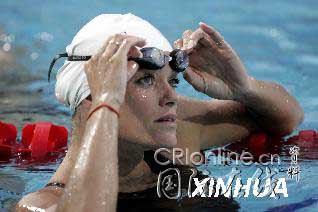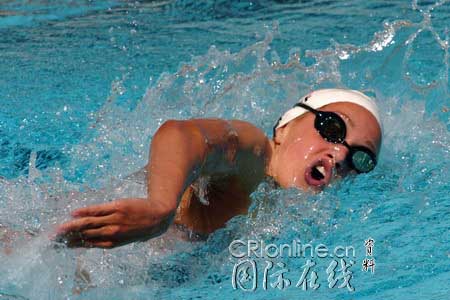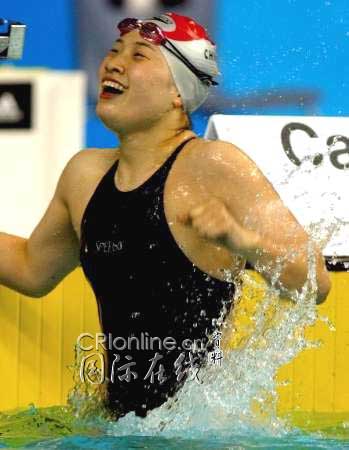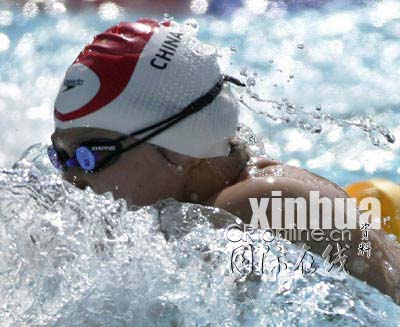Part 1
History of Swimming 游泳运动的历史
The English are considered the first modern society to develop swimming as a sport. By 1837, regular swimming competitions were being held in London's six artificial pools, organized by the National Swimming Society in England. As the sport grew in popularity many more pools were built, and when a new governing body, the Amateur Swimming Association of Great Britain, was organized in 1880, it numbered more than 300 member clubs.
In 1896, swimming became an Olympic sport for men with the 100 metres and 1500 metres freestyle competitions held in open water. Soon after, as swimming gained popularity, more frees tyle events were added, followed by the backstroke, breaststroke, butterfly and finally, the individual medley. tyle events were added, followed by the backstroke, breaststroke, butterfly and finally, the individual medley.
The first modern Olympic Games had only four swimming events, three of them freestyle. The second Olympics in Paris in 1900 included three unusual swimming events. One used an obstacle course; another was a test of underwater swimming endurance; the third was a 4,000-metre event, the longest competitive swimming event ever. None of the three was ever used in the Olympics again.
For a variety of reasons, women were excluded from swimming in the first several Olympic Games. In 1896 and again in 1906, women could not participate because the developer of the modern games, Baron Pierre de Coubertin, held firmly to the assumption, common in the Victorian era, that women were too frail to engage in competitive sports. It was only at the 1912 Games when women's swimming made its debut at the prompting of the group that later became known as the International Olympic Committee.
From the humble beginning with four swimming events, the Olympics have developed to 32 swimming races, 16 for men and 16 for women. The Special Olympics, competitive swimming for people with disabilities, has 22 events for men and 22 for women.
远古时代,人类为适应生存环境,逐渐学会游泳。中国春秋时代就有泅水活动,利比亚史前岩画也有游泳姿势的描绘。现代游泳始于英国,17世纪60年代流行于约克郡地区。1828年在利物浦乔治码头修建了世界上第一个室内游泳池。
1837年成立世界上第一个游泳协会。1908年规定游泳必须在水池内比赛。国际标准游泳池长50米,宽至少21米,深1.80米以上。设8条泳道,每条泳道宽2.50米,分道线由直径5~10厘米的单个浮标连接而成。运动员比赛必须站在出发台上出发(仰泳除外),出发台高出水面50~75厘米,台面积为50×50厘米。
1896年游泳被列为奥运会竞赛项目时,不分泳姿,是真正的“自由式”,只有100米、500米、1200米3个项目。1900年第2届奥运会时,将仰泳分出;1904年第3届奥运会时,又分出蛙泳。1912年第5届奥运会时,女子游泳被列为比赛项目。1956年第16届奥运会,又增加了蝶泳,从此定型为4种泳姿。此后的奥运会游泳比赛发展到共有自由泳、蛙泳、蝶泳、仰泳、混合泳和接力(自由泳与混合泳)6大项32个小项,是奥运会仅次于田径运动的金牌大户。
项目介绍:
2004年第28届奥 运会设男子50米、100米、200米、400米、1500米自由泳,100米、200米仰泳,100米、200米蛙泳,100米、200米蝶泳,200米、400米混合泳,4×100米、4×200米自由泳接力,4×100米混合泳接力;女子50米、100米、200米、400米、800米自由泳,100米、200米仰泳,100米、200米蛙泳,100米、200米蝶泳,200米、400米混合泳,4×100米、4×200米自由泳接力,4×100米混合泳接力32个比赛项目。国际游泳联合会公布A级和B级达标标准以及达到标准的期限,规定每个协会每个单项如只有1名运动员参赛时,该运动员必须达到B级标准,如有两名运动员参赛时,这两名运动员都必须达到A级标准,如没有运动员达标,则每个协会可派男、女各1名运动员参赛。每个协会每个单项最多两名运动员,接力项目每个协会每个项目最多1个队。所有比赛均同时有8名选手参加,50米、100米和200米比赛包括预赛、半决赛和决赛,而200米以上和接力比赛都是在预赛之后没有半决赛,直接进行决赛。 运会设男子50米、100米、200米、400米、1500米自由泳,100米、200米仰泳,100米、200米蛙泳,100米、200米蝶泳,200米、400米混合泳,4×100米、4×200米自由泳接力,4×100米混合泳接力;女子50米、100米、200米、400米、800米自由泳,100米、200米仰泳,100米、200米蛙泳,100米、200米蝶泳,200米、400米混合泳,4×100米、4×200米自由泳接力,4×100米混合泳接力32个比赛项目。国际游泳联合会公布A级和B级达标标准以及达到标准的期限,规定每个协会每个单项如只有1名运动员参赛时,该运动员必须达到B级标准,如有两名运动员参赛时,这两名运动员都必须达到A级标准,如没有运动员达标,则每个协会可派男、女各1名运动员参赛。每个协会每个单项最多两名运动员,接力项目每个协会每个项目最多1个队。所有比赛均同时有8名选手参加,50米、100米和200米比赛包括预赛、半决赛和决赛,而200米以上和接力比赛都是在预赛之后没有半决赛,直接进行决赛。
对于游泳运动来说,时间就是一切,只有达到一定的时间,运动员们才有资格参加奥运会,只有在更短的时间内完成比赛,运动员才能通过半决赛进入决赛,才能夺得奖牌。
因此为了成绩提高哪怕只有几分之一秒的时间,游泳运动员们都要进行长距离的训练。运动员们可以通过清理身体表面来减少皮肤和水之间的阻力,这是允许的,但是禁止使用油脂或其他可以帮助运动员在水中更快游动的身体涂抹物。而对于游泳衣,目前的规定是,只要不会产生浮力,不透明,符合社会的道德标准就可以,但是泳衣的设计会对最后的成绩带来很大的影响。
Part 2
New on Swimming 游泳运动新闻
World's Top Female Swimmer Dedicates Four More Years to TYR Sport
4-time Swimming Olympic Gold Medalist and Current World Record Holder Yana Klochkova has extended her relationship with the TYR family for four more years - through the 2008 Bejiing Games.
Winner of a Historic Double Double, Yana claimed two Gold medals in the 2000 Sydney Olympic Games and then four years later in Athens she won two Golds in the exact same events. No female athlete in the history of swimming has attained such an accomplishment.
TYR is proud to work with such a  highly distinguished female swimmer such as Yana. Matt Zimmer, TYR Director of Promotions expresses the company'sjoy, holding over ten World Record titles, Yana is one of the best female swimmers in the world. It has been an honor to work with her over the last few years. We are looking forward to continuing the strong relationship we have formed with her. highly distinguished female swimmer such as Yana. Matt Zimmer, TYR Director of Promotions expresses the company'sjoy, holding over ten World Record titles, Yana is one of the best female swimmers in the world. It has been an honor to work with her over the last few years. We are looking forward to continuing the strong relationship we have formed with her.
The Olympic Committee and Eurosport recently presented Yana with the SportStar Female Swimmer Award, an accolade given to the female swimmer who embodies true Olympic spirit and values. Swimming World Magazine also recognized Yana's accomplishments, voting her the 2004 Female Swimmer of the Year.
At a celebration of the re-signing, Yana was joined by swimming legends Steve Furniss and Hans Fassnacht. Steve is a 2-time Olympian and the 1976 Olympic Swimming Team Captain. Hans won a swimming Olympic Silver medal in the 1972 Olympics and was Germany Sportsman of the Year for three consecutive years.
Part 3
Glossary of Swimming Terms 游泳运动词汇
Age Group Swimming: Program through which USA provides fair and open competition for its younger members. Designed to encourage maximum participation, provide an educational experience, enhance physical and mental conditioning and develop a rich base of swimming talent. Nationally recognized age groups are 10 and under, 11-12, 13-14, 15- 16, 17-18 and 15-18. Local meets ma y include events for 8 and unders. y include events for 8 and unders.
Backstroke: In the backstroke the swimmer must stay on his or her back, except during the turns. The stroke is an alternating motion of the arms -- much like the crawl stroke -- with a flutter kick. Since April of 1991, a swimmer is no longer required to touch the wall with his or her hand before executing the turn maneuver. The key to proper interpretation of the backstroke rule is the phrase "continuous turning action", i.e., a uniform, unbroken motion with no pauses. In a more technical interpretation, after the shoulder rotates beyond the vertical toward the breast, a continuous simultaneous double arm pull may be used to initiate the turn. There shall be no kick, arm pull, or floatation that is independent of the turn. The position of the head is not relevant. In all U.S. Swimming and FINA competition, each swimmer's head must surface within 15 meters of the start of the race. This is a change from the 1988 FINA rule change which stated that a swimmer must surface within 10 meters of the start of a race. The rule was passed after America's David Berkoff set a world record in Seoul using a 35-meter underwater start, nicknamed the "Berkoff Blastoff" by NBC swimming commentator John Naber. Backstroke race distances are 100 and 200 meters.
Block: The starting platform
Breaststroke: Perhaps one of the most difficult strokes to master, the breaststroke requires simultaneous movements of the arms on the same horizontal plane. The hands are pushed forward from the breast on or under the surface of the water and brought backward in the propulsive stage of the stroke simultaneously. The kick is a simultaneous thrust of the legs called a "frog" or breaststroke kick. No flutter or dolphin kicking is allowed. Swimmers must touch the wall with both hands at the same time before executing their turn. Breaststroke race distances are 100 and 200 meters
Bulkhead: A wall constructed to divide a pool into different courses such as a 50 meter pool into two 25 yard courses.
Butterfly: The most physically demanding stroke, the butterfly features the simultaneous overhead stroke of the arms combined with the dolphin kick. The dolphin kick features both legs moving up and down together. No flutter kicking is allowed. As in the breaststroke, swimmers must touch the wall with both hands before turning. The butterfly was "born" in the early 1950's as a loophole in the breaststroke rules and in 1956 became an Olympic event in Melbourne, Australia. In all U.S. Swimming and FINA competition, each swimmer's head must surface within 15 meters of the start of the race. This rule was passed at the 1998 FINA Congress in Perth, Australia. USA's Misty Hyman, among other swimmers, had utilized an extended underwater start prior to the restriction. Butterfly races are swum in 100 and 200 meter distances.
Circle Swimming: Performed by staying in to the right of the black line when swimming in a lane, to Enable more swimmers to swim in each lane.
Coach: A person who trains and teaches athletes in the sport of swimming
Code of Conduct: An agreement signed by a swimmer prior to travel stating that the swimmer will abide by certain behavioral guidelines.
Cut: Slang for qualifying time. A time standard necessary to attend a particular meet or event.
Distance: Term used to refer to events over 400 meters/500 yards.
DQ: Disqualified. This occurs when a swimmer has committed an infraction of some kind A disqualified swimmer is not eligible to receive awards, nor can the time be used as an official time.
Drill: An exercise involving a portion or part of a stroke, used to improve technique.
Dryland Training: Training done out of the water that aids and enhances swimming performance
Entry Form: Form on which a swimmer enters a competition. Usually includes USA number, age, sex, event number and time.
Failed Swim: Where a meet calls for proof of a time standard and the swimmer fails to meet that standard in a particular race.
False Start: Occurs when a swimmer is moving at the start.
Finals: The championship heat of an event in which the top six or eight swimmers from the preliminaries compete, depending on the number of lanes in the pool.
Flags: Backstroke flags placed five yards (short course) or 5 meters (long course) from the end of the pool. They enable backstrokers to execute a backstroke turn more efficiently by counting their strokes.
Freestyle: In the freestyle, the competitor may swim any stroke he or she wishes. The usual stroke used is the Australian Crawl. This stroke is characterized by the alternate overhand motion of the arms and a flutter kick which can be either a six-beat-per stroke or two-beat-per-stroke cycle rhythm. The slower two-beat kick is used in the distance races, while the faster, six-beat kick is used in the sprint events and at the very end of the distance races. In all U.S. Swimming and FINA competition, each swimmer's head must surface within 15 meters of the start of the race. This rule was passed at the 1998 FINA Congress in Perth, Australia. The freestyle is swum in 50-, 100-, 200-, 400-, 800- and 1500-meter distances at the Olympic Games. Women's events do not include the 1500-meter freestyle, while the men's schedule of events does not include the 800-meter freestyle.
Freestyle Relays: There are two freestyle relays -- 400 and 800 meters. In the freestyle relays, four swimmers each swim one fourth of the total distance. As in the medley relay, no individual may swim more than one leg of the relay.
Goal: A specific time achievement a swimmer sets and strives for. Can be short or long term.
Gutter: The area along the edge of the pool in which water overflows during a race and is recirculated through the filtration system.
Individual Medley: The individual medley, commonly referred to as the "I.M.," features all fou r competitive strokes. In the I.M. a swimmer begins with the butterfly, changes to the backstroke after one-fourth of the race, then the breaststroke for another quarter and finally finishes with the freestyle. The "no-touch" backstroke rule comes into play in the individual medley events in that the new turn may be used in the 400-meter IM (100 meters of each stroke) only in the middle of the backstroke leg. The new turn may not be used in the backstroke to breaststroke turn, however, and is therefore not allowed in a long course 200-meter individual medley race. The IM is swum in 200 and 400 meter distances. r competitive strokes. In the I.M. a swimmer begins with the butterfly, changes to the backstroke after one-fourth of the race, then the breaststroke for another quarter and finally finishes with the freestyle. The "no-touch" backstroke rule comes into play in the individual medley events in that the new turn may be used in the 400-meter IM (100 meters of each stroke) only in the middle of the backstroke leg. The new turn may not be used in the backstroke to breaststroke turn, however, and is therefore not allowed in a long course 200-meter individual medley race. The IM is swum in 200 and 400 meter distances.
IM: Slang for the Individual Medley, an event in which the swimmer uses all four strokes in the following order: butterfly, backstroke, breaststroke and freestyle.
Lap Counter: A set of plastic display numbers used to keep track of laps during a distance race. Also, the person who counts for the swimmer stationed at the opposite end from the start.
Long Course: A pool 50 meters in length. USA conducts most of its summer competition in long course.
Long Distance: Any freestyle event over 1500 meters, normally conducted in a natural body of water, Such as a lake, river or ocean. Also known as Marathon swimming.
LSC: Local Swimming Committee. Governing body for swimming on a local level.
|
|
|
Medley Relay: In the medley relay, all four strokes are swum by four different swimmers. No swimmer may swim more than one leg of the relay, which is swum in backstroke, breaststroke, butterfly and freestyle ord er. Additionally it is possible to see a world record in the 100-meter backstroke (the first leg) in this race. Jeff Rouse, the current men's world record holder in the 100-meter backstroke, set that mark swimming the lead-off leg for the 1991 U.S. team at the Pan Pacific Championships in Edmonton, Alberta, Canada and again on the `92 Olympic team in Barcelona. The medley relay is 400 meters -- or 4x100 meters er. Additionally it is possible to see a world record in the 100-meter backstroke (the first leg) in this race. Jeff Rouse, the current men's world record holder in the 100-meter backstroke, set that mark swimming the lead-off leg for the 1991 U.S. team at the Pan Pacific Championships in Edmonton, Alberta, Canada and again on the `92 Olympic team in Barcelona. The medley relay is 400 meters -- or 4x100 meters
Meet: Competition designed to be a learning experience by implementing what has been learned in practice. The swimmer tests himself against the clock to see how he is improving.
Meet program: Contains pertinent information regarding event, heat and lane assignments for all participating swimmers at a meet. Parents should purchase one at the beginning of each meet.
Middle Distance: Term used to refer to events of 200 yards/meters to 400 yards/meters in length.
National Age Group Time Standard: Time standards derived from the previous years' results that are broken down by age and sex as well as B, A, AA, AAA, AAAA divisions. Theses designations are NATIONAL and may be used for qualifying purposes. Many LSC's have their own time standards.
National Age Group Top 16: Time standards set for both short and long course based on previous years' achievements. Only times meeting these standards may be submitted for consideration each year.
Negative Split: Swimming the second half of the race equal to or faster than the first half.
Official: A judge on the deck of the pool at a sanctioned competition who is there to enforce USA rules. There are stroke and turn judges, administrative officials, starters, timers and referees.
Pace Clock: Large clock with a large second hand and a smaller minute hand, used to check pace or to maintain intervals in practice; may also be digital.
Prelims: Slang for preliminaries, also called Heats or Trials. Those races in which swimmers qualify for the championship and consolation finals in events.
Proof of Time: A requirement at some meets to make certain that all swimmers have legally met the time standards for that meet. Parents must pay $25.00 for any failed swim at a Southeastern championship meet.
Q-Time: Qualifying time necessary to compete in a particular event and/or competition.
Referee: The official who has the authority over all other officials at a meet. He/She makes all final decisions and sees to the efficient running of the meet.
Relay: An event in which four swimmers compete together as a team to achieve one time.
Safety: The condition of being safe. Safety procedures are designed to prevent accidents.
Scratch: To withdraw from an event in a competition.
Seeding Times: The time a swimmer uses to enter a meet. This time, which is written on the entry card, determines ones position and lane in a particular meet.
Set: A group of drills put together to form a complete practice.
Senior Swimming: The program through which USA provides fair and open competition in National Swimming championships. It is designed to afford maximum opportunity for participation, provide an educational experience, enhance physical and mental conditioning and develop a pool of talented athletes for International competition. There are no age restrictions in Senior competition.
Short Course: A pool 25 yards or 25 meters in length. USA conducts most of its winter competition in short course.
Split: A swimmer's intermediate time in a race. Splits are registered every 50 yards or meters and are used to determine if a swimmer is on record pace. Under certain conditions, splits may also be used as official times.
Sprint: Describes the shorter events (50 and 100). In training, to swim as fast as possible for a short distance.
Starts and Turn: Many races are lost in poor starts and turns. In the start, the swimmer is called to starting position by the starter who visually checks that all swimmers are in the down positions and still. Then, once the starter is satisfied, the race is started by either a gun or electronic tone. If the starter feels that one of the swimmers has jumped early, the race will be recalled and the offending swimmer disqualified. Quick turns are essential to a good race. In all events the swimmer must touch the wall, but in the freestyle and the backstroke, the swimmer may somersault as he or she reaches the wall, touching only with the feet. In the other two competitive strokes, the swimmer must touch the wall with one or both hands before executing the turn.
Starter: The official at a meet responsible for starting each heat and calling the next heat to the blocks.
Streamline: The position used to gain maximum distance during a start and/or push off from the wall in which the swimmer's body is as tight as it can be.
Stroke and Turn Judge: The official who determines the legality of a swimmers' strokes and turns and who disqualifies those swimmers who do not conform to the rules.
Taper: The final preparation phase prior to major competition. An older more experienced swimmer will shave his entire body to reduce resistance and heighten sensation in the water.
Time Trial: A time only swim which is not part of a regular meet. which is not part of a regular meet.
Touch Pad: A large sensitive board at the end of each lane where a swimmer's touch is registered and sent electronically to the timing system.
USA Swimming: United States of America Swimming, Inc. The national governing body for amateur competitive swimming in the United States.
USA Card number: Unique number assigned to a swimmer when they join United States of America Swimming.
Warm Down: Low intensity swimming used by swimmers after a race or main practice. It rids the body of excess lactic acid and to gradually reduce heart rate and respiration.
Warm Up: Used by a swimmer prior to a main practice, set or race. Gets muscles loose and warm and gradually increases heart and respiration.
Watches: Stopwatches used to time swimmers during a competition, usually electronic. When totally automatic timing equipment is used, watches serve as a back-up method. | |
|
